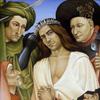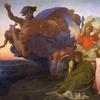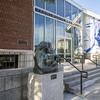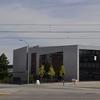Enchanted Landscapes: German Romantic and Contemporary Prints at The Curator Gallery
- NEW YORK, New York
- /
- October 14, 2015
The Curator Gallery will present (Oct. 22- Dec. 12, 2015) its second annual print exhibition, Enchanted Landscapes: German Romantic and Contemporary Prints. Building on the tremendous response of last year’s show, Print Facets: Five Centuries of Printmaking, the new exhibition once again examines printmaking past and present.
The show features work by German Romantic artists Albert Christoph Dies, Jacob Mechau, Carl Willhelm Kolbe and Johann Christian Reinhart, who used landscapes to invoke the sublime and spiritual during an intense period of political, cultural and economic change at the turn of the nineteenth century. These rare and alluring scenes are juxtaposed with work by eight contemporary printmakers with remarkably similar aspirations: Ann Aspinwall, Sebastiaan Bremer, Victoria Burge, Michael Canning, Blaise Drummond, Beth Ganz, Stuart Rome, and Donald Teskey.
Stimulating the spiritual through art was a cornerstone of German Romanticism, and by expressing this belief primarily through landscapes, the German Romantic artists elevated the genre to a new position in the art world. They were among the first group of artists to draft “en plein air,” using nature as a direct source. Depicting landscapes in exalted compositions from great vistas to intricately detailed forests and foliage, the German Romantic artists sought to awaken an appreciation for beauty and mystery that they felt had been lost. Great social changes - from the Industrial Revolution to the fall of the Holy Roman Empire to the rise of rationalism as the dominant intellectual perspective – spawned Romanticism, a movement of artists and writers disenchanted with a rapidly changing society and the emphasis on the intellect over the senses.
“My youth fell in those times when not only in Germany, but in the greater part of the civilized world, the sense for the beautiful, the sublime and the mysterious seem to have sunk to sleep or to be dead.” -- - Ludwig Tieck, The Story of William Lowell, 1795
Similarly, the contemporary printmakers featured in this exhibition are working in times of challenging social change. Like their Romantic predecessors, they are enticing viewers to slow down and see the sublime in their surroundings. But this time it is the Digital Revolution, which has profoundly impacted daily life. While technology brings us closer to things we desire with instantaneous access to people, information and material possessions; the experience of it tends to be immersive and in a curious way distances people from their immediate environment, if not making them completely oblivious to their surroundings
In this context, the contemporary artists in the show are turning to landscape both abstract and representational, both urban and from nature to address the human condition. Artist Blaise Drummond describes his work as a response to the contradictions between nature and civilization and the result as his “private and universal lost Eden.” Landscapes can also reflect cultural identity. Just as the German Romantics used the idyllic to express their love of country, Irish artist Donald Teskey creates powerful images of the Irish coast, which suggest the “relentless, energetic and elemental” nature of the land and its people.
If Post-modern art encourages us to seek inspiration in the mundane, nowhere is this more evident than in Ann Aspinwall’s work, in which she literally draws from the cobblestones beneath her feet to create abstract landscapes that envelop the viewer and invoke a sense of awe. She says, "When I stand alone under an unobstructed night sky or before an expansive seascape, I am permeated by a deep feeling of both reverence and quietude. In an urban environment, this experience is harder to achieve. Large stretches of pavements are a haven for my senses. I am captivated by the individuality of each component and the rhythmic cohesion of the surface as a whole." “Spirit of Place” the title of another Aspinwall series featured in this show, captures what all the artists in this exhibition, past and present sought to express. Put rational thought on hold. Put down your iPhone. Look up, or even look down. Stop and sense the sublime.













